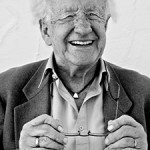Good peace proposals quite often works!
By Johan Galtung
Kuala Lumpur: Perdana Global Peace Foundation, 25 August 2013: “Global Peace Efforts: What Went Wrong & What Next?”
The TRANSCEND NGO Mediation Network just turned 20, and our experience is clear: a good peace proposal quite often works.
To mention some out of 30 positive experiences: we have had a hand in launching peace studies and peace journalism; improving race relations in Charlottesville, VA; in ending the Cold War through bridge-building between Norway and Poland, the idea of a Conference for Security and Cooperation in Europe and nonviolence; in improving North-South relations through South-South cooperation and then relinking with North on a basis of equity–this from the early 1960s.
Later on there have been contributions to peace on the Korean peninsula (first unify the nation, then perhaps the countries), the Kurdish issue (a Kurdistan as a confederation of human rights-based autonomies in the four countries), ending the longest war in Latin America, Ecuador/Peru (a two-state condominium up in the Andes with a natural park, later a joint economic zone); in tripartite peace in the Caucasus; in solutions for bullying in schools; in judicial mediation; in the problem of settlers in Zimbabwe; conciliation Germany/Herero, Turkey/Armenians, Denmark/Islam; and so on and so forth, up till now.
Our conspicuous failures include Israel/Palestine-Arab States-Islam, Yugoslavia, Sri Lanka, Kashmir, Nepal, Colombia; not for lack of trying. As many have pointed out, mediation becomes very difficult if one party is convinced that victory is at hand, positively by being stronger (USA, Israel), negatively by expecting others to collapse (the Koreas, India/Pakistan in Kashmir). The winner can dictate the terms; they think. However, victory is not peace. Victory is glory to the winner and appetite for more; and trauma for the loser and wish for revenge, for revanche, a new deal. It may look as if the victory is acceptable and sustainable but just wait and victory backfires. Nothing solved.
True peace has to address not only the inner attitudes of hatred and the outer behavior of violence–even if more empathy and less violence will help–but the contradictions, incompatibilities between them. We are talking about peace, not glib pacification like Nepal.
In our experience a good peace proposal has some characteristics:
• it comes out of mediation dialogues with all parties, eliciting their legitimate goals (compatible with human rights), their visions of a good future; treating them all (they can be numerous!) equally;
• it is concrete, constructive, creative–not generalities, not moralizing criticism; and creative, bringing in something new;
there must be in the proposal the legitimate parts of the goals of all parties + something extra to all by creating a new reality, moving forward (like a condominium in the Andes, or a Middle East Community);
• the proposal should be self-sustaining by paying for itself (like a condominium for the islands in the China seas with mainland Southeast and Northeast Asia and island Asia Philippines, Taiwan, Japan, with a revenue distribution profile that also pays for the condominium);
• the proposal should be seen by outside parties as reasonable, even compelling–Enact Me!!–making rejection look unreasonable;
ideally the parties work out the details together in the direction indicated by the proposal; if unacceptable their objections should be taken seriously and if legitimate be worked into the proposal;
• the good proposal should be sustainable by making the incompatible compatible; the experience being that hatred and violence wither away when a good solution respecting the dignity of all has come about.
A good solution must identify the conflict (not between Korea North and South, more between North Korea and USA). A good solution depends on creativity more than “good chemistry” between the parties: they may actually understand each other too well, proposing solutions in a shared direction (like drawing a border in the Andes). A solution-orientation is needed; analyses taught at universities are not good enough, nor diplomacy as promoting the interests of one’s own state. But, Anatol Pikas pointed to five impediments to solutions:
• Conflict and violence are attractive, producing identity and thrill of life, the media feeding on the negative and bloody; love them not peace.
• People are used to conflict being solved at the top, so they will wait till the top comes out with something, by definition a solution.
• To take responsibility often means hard work; leave it to others.
• Archetypes tend to be violent, like “heroes”, defining violence and victory as normal-natural-good. But Gandhi-King-Mandela changed that?
• Proposals may carry more cognitive dissonance than people can take, like breaking with the hegemon yet cooperating when the hegemon shows signs of equity, criticizing Israel’s expansionism, but proposing a Middle East community on equal terms with the five Arab neighbors– modeled on the EC of 1958–with a two-state solution in the center and embedded in an Organization for Security and Cooperation in West Asia. One Jerusalem for each as capital, rights of return for both, Israeli cantons on the West Bank and Palestinian cantons in Northwest Israel.
Why? Because there is a Jewish legitimacy given the history of Antiquity and for the same reason an Arab legitimacy. Those who argue also on the basis of history like I do, will of course also recognize the legitimacy of Chinese rights to the sea given the sea lanes from East China to East Africa 500 AD to 1500 AD, brutally eliminated by two countries from the West, Portugal and England. What is not legal may nevertheless carry legitimacy and be negotiated.
To summarize: to reduce violence we must identify the conflicts, the clash of goals; to identify conflicts we must have dialogue with all parties; to arrive at solutions the method is a mutual search for a new reality, not winning debates and compromises; the more proposals floating in the air the better; sooner or later they will be picked up.
This article was first published here.
